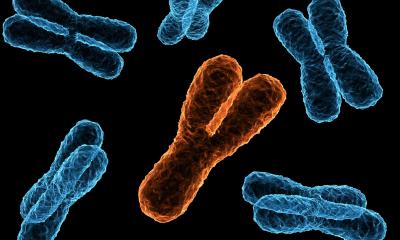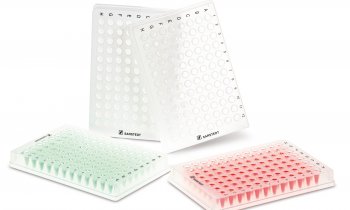Discovery
Potential genetic trigger of autoimmune disease
Researchers at Hospital for Special Surgery (HSS) have uncovered a potential genetic trigger of systemic autoimmune disease. The study, the culmination of more than 10 years of research, discovered virus-like elements within the human genome linked to the development of two autoimmune diseases: lupus and Sjogren's syndrome.

An autoimmune disorder occurs when the body's immune system malfunctions. Instead of protecting the body, it attacks and destroys healthy organs. More than 80 types of autoimmune disorders, including rheumatoid arthritis, lupus and Sjogren's syndrome, affect up to 22 million people in the United States, according to the National Institutes of Health. The precise cause of autoimmune diseases remains a mystery, but most scientists believe a combination of genetic and environmental factors come into play. For example, viral infections have been linked to the development of these disorders.
For their study, HSS researchers hypothesized that the abnormal expression of genetic elements known as LINE-1 ( L1) retroelements might trigger an innate immune response similar to that produced by outside viruses and contribute to an overproduction of interferons. Interferons are molecules our body produces in the presence of viruses and other pathogens to mobilize the immune system.
In healthy individuals, interferon is part of the complex immune response to combat danger. However, if levels of interferon are too high, instead of playing a protective role it can contribute to the development of autoimmune disease. "In a number of these diseases, such as lupus and Sjogren's syndrome, a class of interferon known as type 1 interferon is made in abundance and plays a key role, contributing to the immune dysfunction," said Mary K. Crow, MD, physician-in-chief at Hospital for Special Surgery and senior study author.
Investigators set out to discover why interferon was being produced in excess. "We hypothesized that virus-like DNA sequences inherent in our own genomes or the RNA transcripts they produce might be driving the production of interferon and contributing to disease," said Dr. Crow, chair, Department of Medicine, and Benjamin M. Rosen Chair in Immunology and Inflammation Research at HSS. "Our genomes are packed with sequences derived from viruses that were inserted many thousands of years ago, and these virus-like sequences can move around, causing genetic mutations and contributing to the evolution of our genomes. We hypothesized that they sometimes generate virus-like RNA sequences that can be detected by the immune system."
Researchers studied kidney biopsy samples from 24 patients with lupus nephritis and salivary gland tissue from 31 patients with Sjogren's syndrome and compared them to healthy tissue. "Our findings support the hypothesis that L1 retroelements, perhaps along with other virus-derived genomic elements, may contribute to the development of autoimmune disorders characterized by high levels of type 1 interferon," she said. "Although it may not be the only cause, it's intriguing to think that virus-derived elements in our own genome are either quiet and don't cause any trouble, or they get stirred up and contribute to disease."
Further studies are needed to elucidate the role of both exogenous and endogenous viruses in the development of autoimmune disease, Dr. Crow said. Gaining a better understanding of the underlying disease mechanisms could offer the possibility of developing new and better treatments for lupus and other autoimmune conditions in the future.
Source: Hospital for Special Surgery
06.07.2016











